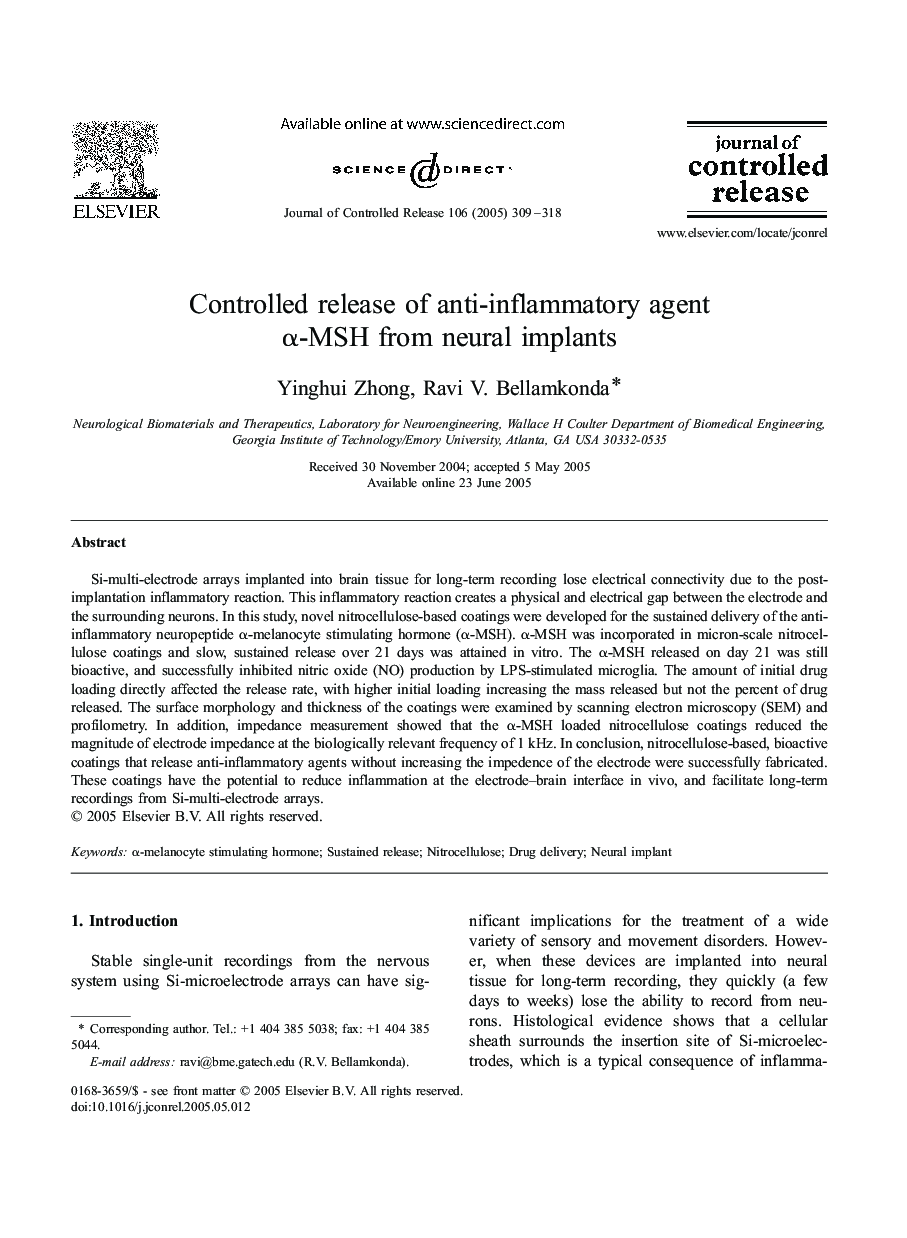| Article ID | Journal | Published Year | Pages | File Type |
|---|---|---|---|---|
| 10613430 | Journal of Controlled Release | 2005 | 10 Pages |
Abstract
Si-multi-electrode arrays implanted into brain tissue for long-term recording lose electrical connectivity due to the post-implantation inflammatory reaction. This inflammatory reaction creates a physical and electrical gap between the electrode and the surrounding neurons. In this study, novel nitrocellulose-based coatings were developed for the sustained delivery of the anti-inflammatory neuropeptide α-melanocyte stimulating hormone (α-MSH). α-MSH was incorporated in micron-scale nitrocellulose coatings and slow, sustained release over 21 days was attained in vitro. The α-MSH released on day 21 was still bioactive, and successfully inhibited nitric oxide (NO) production by LPS-stimulated microglia. The amount of initial drug loading directly affected the release rate, with higher initial loading increasing the mass released but not the percent of drug released. The surface morphology and thickness of the coatings were examined by scanning electron microscopy (SEM) and profilometry. In addition, impedance measurement showed that the α-MSH loaded nitrocellulose coatings reduced the magnitude of electrode impedance at the biologically relevant frequency of 1 kHz. In conclusion, nitrocellulose-based, bioactive coatings that release anti-inflammatory agents without increasing the impedence of the electrode were successfully fabricated. These coatings have the potential to reduce inflammation at the electrode-brain interface in vivo, and facilitate long-term recordings from Si-multi-electrode arrays.
Related Topics
Physical Sciences and Engineering
Materials Science
Biomaterials
Authors
Yinghui Zhong, Ravi V. Bellamkonda,
